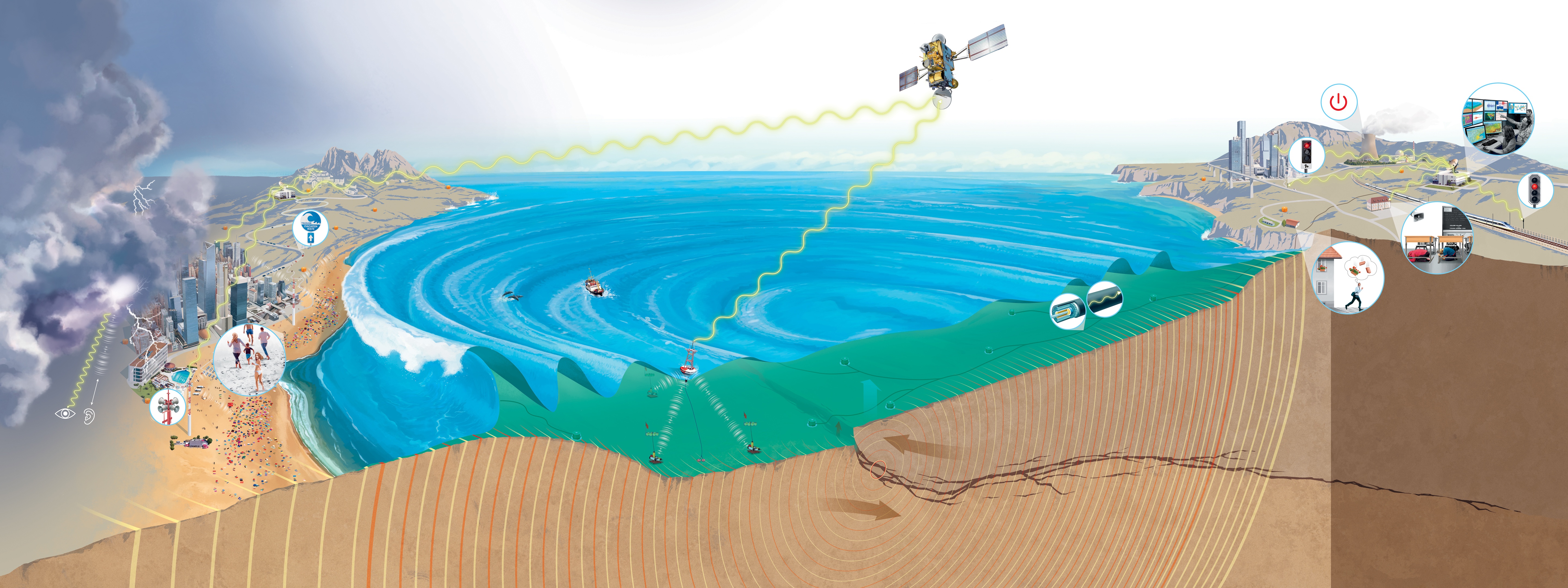Ready – Steady – Go
Using waves as warning signs thanks to different velocities
When a wave is generated, it spreads out in all directions at a certain velocity. If there is another, faster wave,
it can overtake the first, slower one and announce its arrival.

Earthquake Early Warning
If measuring stations register an earthquake, the information is automatically transmitted to a data centre via an electromagnetic wave. Since this signal travels much faster than earthquake waves, it can be used as a warning.
Waves generated during an earthquake are recorded by seismometers. The arrival of the first waves is transmitted wirelessly or by fibre optic cable to a data centre. This signal is so fast that it overtakes even the fastest earthquake wave. Valuable seconds can thus be gained to warn people and, for example, to automatically slow down highspeed trains. The further away from the origin of a quake, the more time there is for an early warning.
Early warnings can be improved by estimating more quickly how strong the shaking will be at a particular location. In addition, research focuses on making warnings easier to understand and speeding up simultaneous transmission to millions of people.
Thunder and Lightning
First we see lightning, then we hear thunder. The lightning announces the storm and the thunder tells us how far away it is.
The flash of lightning and the rumble of thunder originate in the same place at the same time, but they propagate at different velocities. The lightning’s electromagnetic waves travel so fast that they reach us almost immediately. The much slower sound waves of the thunder reach us a little later.
We count the seconds between lightning and thunder to find out how far away the storm is. Since sound waves take about three seconds to travel one kilometre in the air, we divide the lightsound delay by three and get the distance in kilometres. This information helps us to estimate if and when we have to get to safety.
Tsunami Alarm
A tsunami moves relatively slowly. Earthquake waves and electromagnetic signals from tsunami measuring stations can reach the coast more quickly so that people can be warned in time.
When an earthquake occurs under the sea, a part of the sea floor can suddenly rise or fall. This sets the entire overlying water column in motion, generating a tsunami that spreads out in all directions. When its wave crests and troughs move over a pressure sensor on the sea floor, the amount of water above the sensor alternately increases and decreases. The sensor thus registers the typically long wavelengths of the tsunami. It transmits the signal via buoy and satellite to a data centre, from where a warning can be sent to the inhabitants on land.
If a tsunami occurs near the coast, even electronic data transmission can take too long. In that case, natural warning signs such as a sensed earthquake or the receding of the sea can serve to alert us. However, all warnings are only useful if people receive them in time, understand them and know what to do – regardless of where they are, what language they speak and whether they have a mobile phone or not.